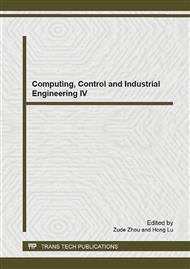p.121
p.127
p.131
p.137
p.143
p.149
p.153
p.157
p.161
Research on the Grinding Force of the Basin-Like Grinding Wheel in Grinding Elliptical Grooves of Outer Race
Abstract:
In order to calculate the grinding force of the basin-like grinding wheel in grinding outer race elliptical grooves, the thesis simplifies the grinding process as follow: the evenly distributed abrasive grains move around grinding wheel axis along an imaginary ellipse at high speed, while the imaginary ellipse moves along the trace deflected from the grinding wheel axis simultaneously. The analysis of grinding force in CVJ outer race elliptical groove grinding with basin-like grinding wheel reveals that, the grinding force will be decreased, if wheel velocity increased and feed velocity decreased. On the other hand, with the decrease of inter-grain spacing, the grinding force of basin-like grinding wheel will be increased, but the grinding force of abrasive grit will be decreased.
Info:
Periodical:
Pages:
143-148
Citation:
Online since:
October 2013
Authors:
Price:
Сopyright:
© 2013 Trans Tech Publications Ltd. All Rights Reserved
Share:
Citation:


